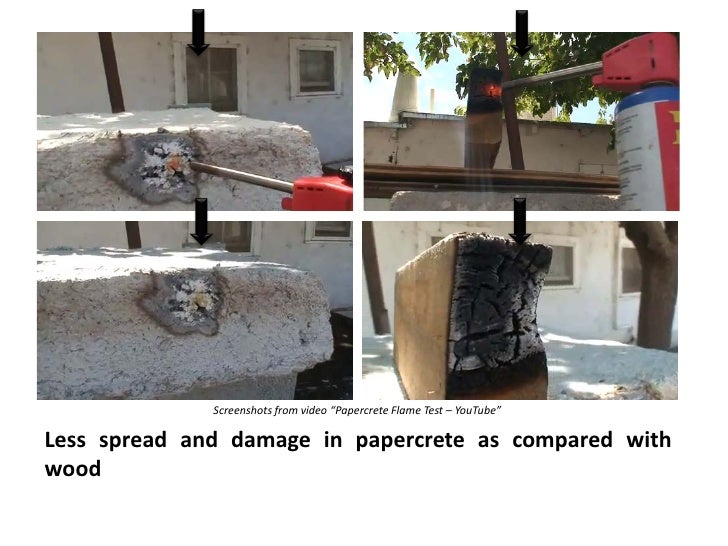Building With Papercrete Pdf Download

Construction material made with waste paper, cement and water. Papercrete had been. Using papercrete building blocks in place of conventional or concrete. Using this technique for building a papercrete house is a good choice. Finishing Papercrete. Download papercrete Brick.pdf. In view of that. Papercrete is recycle-reusing old paper in a slurry of sand and cement mixed and poured into molds to make any size and shape brick you please.
A combination of paper, sand and cement who knew recycled old newspaper could build a house? Papercrete is an incredible building material that is lightweight, amazingly insulate, and low cost.
Any paper can be used, including old newspapers, phone books, and cardboard. Papercrete can be formed into bricks by simply pouring the pulpy mixture into molds, then setting them into the sun to dry, similar to bricks. Once dry, the bricks can be used like traditional bricks, using more papercrete as the mortor to hold the bricks together. For more information, read our full introductory article on. We will cover advantages/disadvantages, and the various applications of papercrete, including it’s insulative properties, in conjunction with other green and natural building constructions.
Select a codec that you want to install. All codecs that you want must be installed one by one. MCI drivers are not needed as these are legacy drivers for Windows 95/98/Me. Install microsoft adpcm audio codec windows 10. Select one of the codecs needed such as Microsoft IMA ADPCM Audio Codec, and click on Next to reinstall the codec (on install the new codec is not yet be installed).
Image credits. Papercrete is recycle-reusing old paper in a slurry of sand and cement mixed and poured into molds to make any size and shape brick you please. It’s cement ‘light’, all the insulated properties you want without the weight. The recipe goes as follows: 60% paper (newspaper/cardboard/magazines), 30% sand and 10% cement.
Once that puppy cures it’s a done deal holding its shape even when wet. A really useful option is being able to treat it like ‘ Rammed Earth‘ to pour the mix into forms and allow the entire wall to cure before removing the forms. If you choose to make bricks – treat them like bricks and mortar them together using more soupy papercrete and finish it off with a papercrete plaster (and a silicone sealer) to prevent water from seeping in.
On dome roofs some people have even used tar to create a waterproof layer. Since ‘waterproofing’ is the biggest challenge papercrete faces, a proper waterproof foundation that prevents water from wicking up into the walls needs to be observed. However, since papercrete is much lighter than other natural building materials there is no need for massive foundations, thus cutting your construction costs considerably.
A one foot thick wall has an R-value of 33, plus it acts like adobe with substantial thermal mass taking heat into itself during the day, releasing that warmth at night when temperatures fall. A huge boon for papercrete is the low amount of sand and concrete in the mix allowing windows and doors to be literally cut out of the wall. Talk about forgiving. I especially love the idea of pouring papercrete on top of a 2 inch slab for a softer yet well insulated floor. Again, moisture, rain and run off are the biggest challenge so adequate attention must be given to drainage, overhangs, high and dry foundations and a silicone sealer (homestar sealer)with Elastomeric paint on top to expand and contract with the temperatures while keeping the water out).

While this is a tasty morsel to be sure let’s review the pros and cons. Advantages of Papercrete: • Recycles paper waste • Reduces amount of concrete in build • Lighter building material is safer and easier on body to work with • A cool project for the DIYer • Minimal equipment is needed to make your own bricks • Easy technique to learn • Forgiving medium to work in • Lends itself to curvy, artistic expression • Papercrete brick manufacturers have emerged • Lite weight only requires a 2inch concrete pad for a foundation • Tech. Reports now exist • Suitable for hot/arid climate Disadvantages of Papercrete: • You want to build a what? Getting permits • Non-resistance to water • Experimental – you are the guinea pig • Not too many construction crews around doing this yet • Codes not yet written for this method • Not suitable for the rain forest or wet climates Books: by Gordon Solberg (1999) by Kelly Hart DVDs and PDF Technical Reports: Papercrete workshops and instructional DVD for sale: Building ‘How To’ with Papercrete and Paper Adobe: YouTube Video Series: Judith Williams offers 6 step by step ‘How To’ videos, lots of great tips: Image credits:.